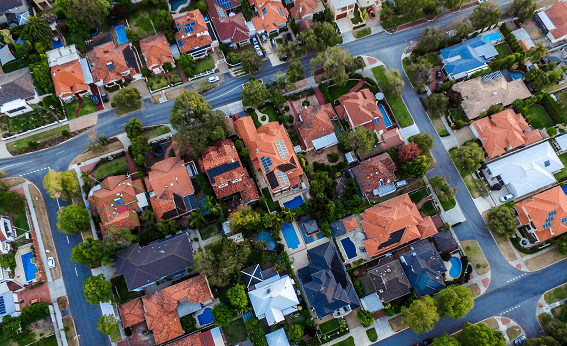Alabama has the second highest electricity prices in the nation. Better compliance with modern energy codes can help ease the burden on homeowners and provide a level playing field for local builders.

The average residential electricity bill in Alabama is $145 per month, the second highest average in the nation behind South Carolina. High electricity bills mean that people need to pay more of their income for utilities. According to the most recent EIA Residential Energy Consumption Survey, about one in five households reported reducing or forgoing basic necessities like food and medicine to pay an energy bill. Improving compliance with Alabama’s statewide energy code will help reduce home energy cost burdens and create a level playing field for all builders, among other benefits.
Alabama was selected as one of eight states to receive funding from DOE for an energy code field study of new residential construction, as well as no-cost resources, education, technical assistance, and training on energy codes and compliance. IMT is entering the final phase of leading these efforts in Alabama.
The project was split into three phases: During phase one IMT and its partners conducted a baseline analysis of potential energy savings that would result from better code compliance. In phase two we provided code training for Alabama’s building community, and in phase three we collected final data for a report on the project’s outcomes, which will be published later this year by the Pacific Northwest National Laboratory (PNNL).
In this blog I will provide an overview of what IMT learned in each phase of the project and offer a sneak preview of the initial results that will be included in the PNNL report.
Phase 1: Setting a baseline for code compliance savings potential
The baseline collection and analysis identified opportunities for Alabama homeowners to save money on their utility bills, such as improving building envelopes to allow less air leakage. The project took a sharp turn at this stage, when Alabama decided to move from the 2009 International Energy Conservation Code (IECC) to the 2015 IECC. This increased the energy savings potential of homes by about 18 percent through code compliance and was a positive step toward more energy savings and better homes for Alabamans. Together, the analysis provided valuable insight on challenges facing energy code implementation and enforcement, and informed training and outreach activities for Phase 2 of the project.
Phase 2: Training the Alabama building community on energy code compliance
The project team wanted to focus on providing education that would be targeted and specific to the needs of Alabama. To fully accomplish this, the baseline report was reviewed under two lenses—what wasn’t working under the 2009 energy code, and what difficulties may be experienced by builders and code officials alike due to the shift to the 2015 code. Training materials were created to address the needs of the building community at large and pointed builders, designers, and code officials towards areas with the greatest potential for savings, such as lighting and envelope tightness.
More in-depth trainings were designed for local plans examiners, inspectors, and builders to dig deeper into the major code changes and highlight areas that need attention with specific strategies and resources. Altogether, 23 in-person and online trainings were completed across Alabama from August 2016 to November 2017.
Phase 3: Final data collection and initial results
The final stage of data collection kicked off in November 2017. The project’s field data collectors visited 126 homes to gather information required for the final report. The initial results, which I mentioned earlier will be published in a forthcoming PNNL report, revealed that Alabama saw gains in compliance in installation of high-efficacy lamps, frame wall R-values, and window U-factors and SHGC. Frame wall R-values and window U-factors moved to being 100 percent compliant with the new code. Areas of concern remain, especially with overall envelope leakage and duct leakage rates.
As part of this phase, IMT met with stakeholders in Alabama on September 10 in partnership with the Alabama Department of Economic and Community Affairs (ADECA) to review the results of the project and gather feedback for shaping a long-term compliance plan for the State.
Here are some key points we heard from local stakeholders:
- Building officials who were actively involved in the project had made changes to their processes to look at energy conservation issues at plan review and inspections.
- Stakeholders believe that compliance has increased, even beyond the data sample from earlier in 2018.
- More inquiries on how to comply with the energy code and how to get energy code training have been coming in to ADECA and local building officials.
- Relationships with contractors have gotten better with improved sharing of information.
- There is a need for continued training that is low cost and can provide International Code Council continuing education credits.
- There is increasing interest in understanding buildings as systems, especially with regard to indoor air quality and HVAC.
That last point is especially critical in Alabama and the Southeast as a whole. Moves to change the mechanical ventilation criteria to trigger at 3ACH50 instead of 5ACH50 have been driven by issues around mold growth due to negative pressure under exhaust-only systems that draw humid air through exterior wall assemblies in uncontrolled and unpredictable ways. Translation: The humid air in the Southeast creates the need for HVAC systems that use balanced ventilation strategies.
IMT is working closely with our project partners to provide recommendations that can be used by Alabama as it works to improve energy code compliance and ensure more efficient residential buildings. Stay tuned for the final PNNL report, which will provide more data and analysis on Alabama’s energy code future.
Have a question about this project or other building energy code and code compliance issues? Send an email to imtweb@imt.org and one of IMT’s codes experts or I will get back to you.
